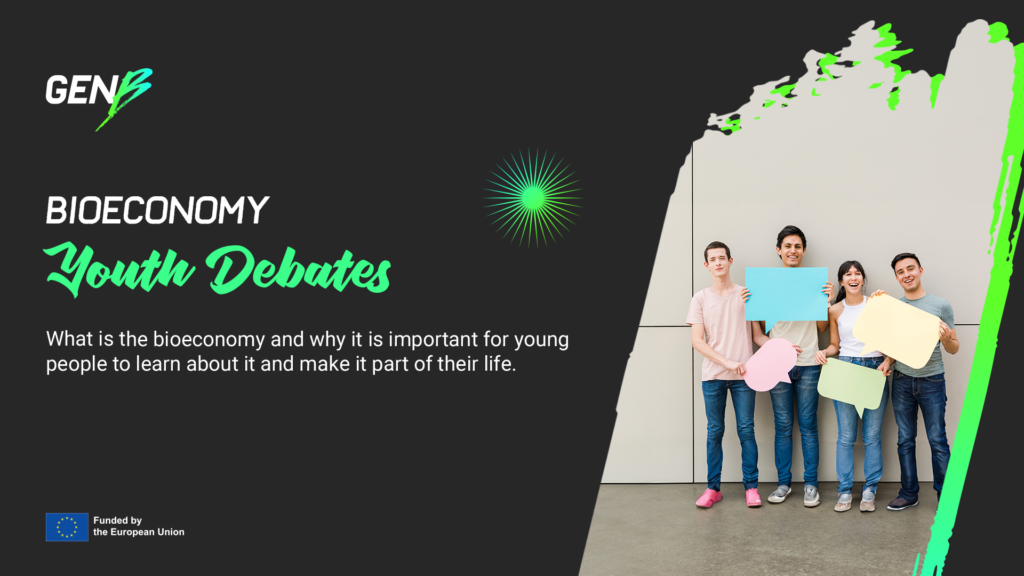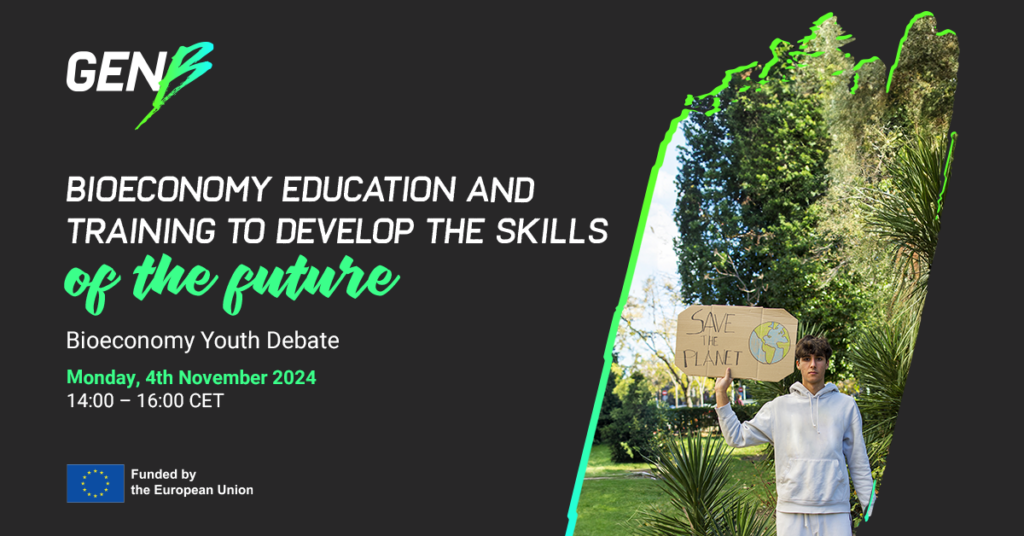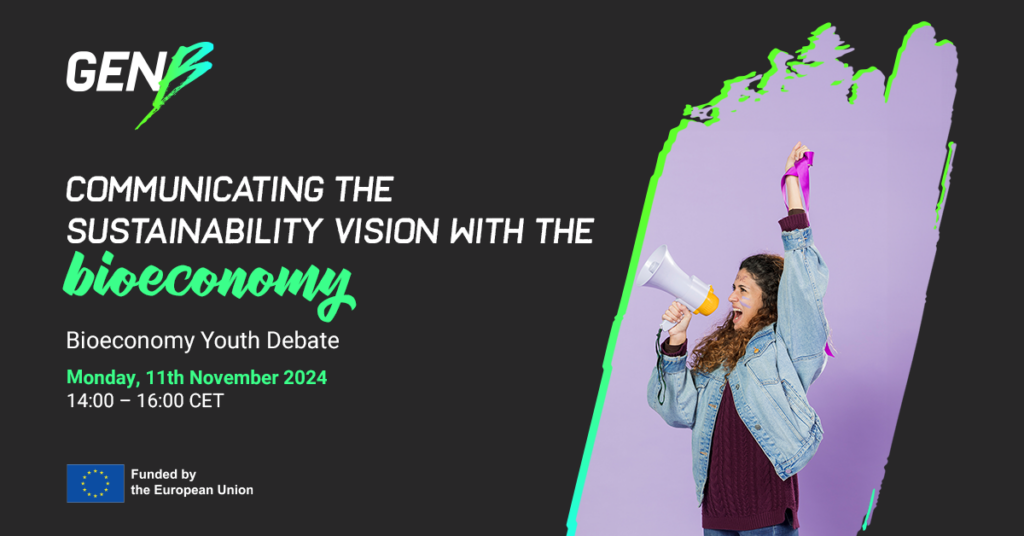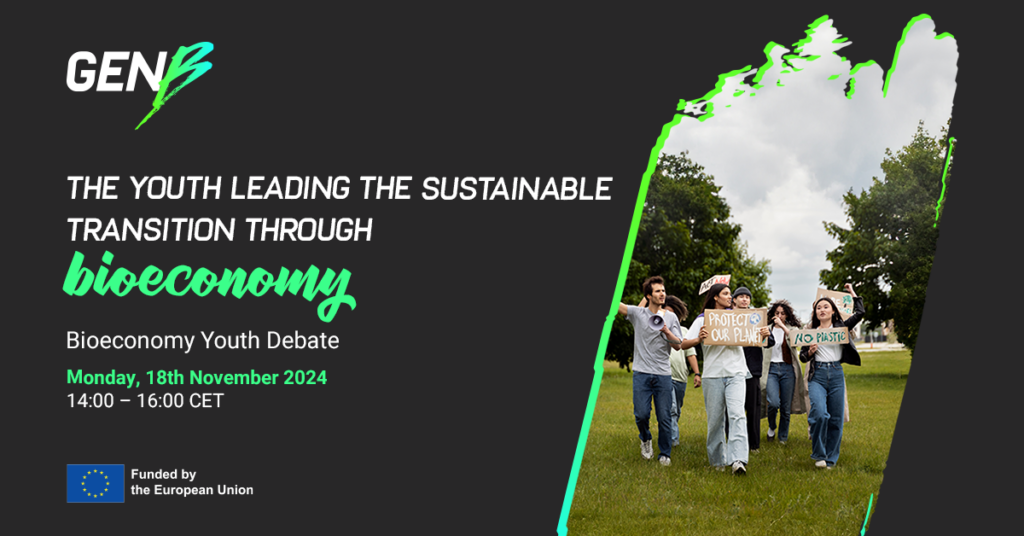
You have surely heard from your parents, your teachers and even the news how our modern way of living affects the planet and the environment.
You probably already know how to recycle and why we need to protect our environment from pollution and that we all need to adopt a sustainable way of life to protect the future of the next generations.
Our modern way of life can be very comfortable, and we have lots of products and technologies imaginable to make it even easier. Our planet generously provides us with all the resources and materials we need to build a better future for more than 8 billion people, but its powers are not unlimited. We humans use too many resources, and we pollute, destroy and change our natural environment so quickly that it’s not possible to regenerate in this pace. Our generation and the next ones to come will have to face the cost of our unsustainable way of living, such as the climate change crisis, shortage of food and raw materials to produce technology products (just consider a life without a smartphone or GPS).
Since the mid-20th century, scientists have been working hard to let the humanity know about these problems and to act towards protecting the environment for the next generations. They have developed many technologies such as clean solar power to replace fossil fuels and prevent the climate changes and have become more creative in the past decades.
The bioeconomy is one of the many exciting ways to build a sustainable way of life that is based on the use of natural resources to produce cool products, energy and electricity and other essential comforts of our everyday life.
The great thing about the bioeconomy is that that the planet can replace these resources easily, such as plants, microorganisms and animal or food waste instead of oil, gas and other fossil fuels or metals that take millions of years for the planet to create.
There is a lot of hype about recycling and solar power, but you may not hear about the bioeconomy that much.
The bioeconomy and circular economy are focused on protecting our resources by making the best possible use of what they offer to humans and to find ways to use for longer instead of sending them to waste, creating a loop. The bioeconomy can be very simple to understand and very complex at the same time, as scientists create new technologies to use biological resources with biochemistry, bioengineering and other ways.
The bioeconomy will become even more important for our future and there are exciting things happening by scientists, experts, businesses, politics and other people working together.
We are sure your generation has a lot of talent and passion to offer to this world with the bioeconomy and lots of benefits from a cleaner and sustainable lifestyle.
The problem is that you are not included in important decisions as much as you should, and you’d like to.
This series of debates by the GenB project is designed for this purpose, as we want to give you a space to express your voice, be creative and imagine a better world that you and your peers lead with the bioeconomy. We also want to learn from you how can the young generations become the leaders of the sustainable future from the early stages of their life and influence others to join the movement. We want to share your opinions, ideas and needs with policymakers such as the European Commission and other influential networks across Europe.
Our debates are largely inspired from the Bioeconomy Youth Vision created early this year by a group of dedicated young people like you, the EU Bioeconomy Ambassadors.
Debate #1: Bioeconomy education and training to develop the skills of the future

Topic 1.1: Teaching the bioeconomy to young people
Bioeconomy is expected to play a huge role in our future lives and can be a very complex topic to learn. So, it’s important that kids learn about it at school, home and in their everyday life from an early age and to learn how to apply it in their lives.
Using bioeconomy, young students can understand better how the planet works in complex systems that work together to form our environment and how we can live our lives in balance with other life forms and the environment. Forests, lakes, animal habitats and human communities are complex systems in themselves. Also, it is important to understand lifecycle thinking, that is how human activities affect the environment, the society and the economy in as many ways as possible, such as the production of food, clothes, technology and other essential goods and services in every step from the collection of materials to the consumer. Also, they need to learn how to understand and choose sustainable products from harmful ones as well as to use them for longer to become conscious consumers.
Bioeconomy relies much on different sciences like biology, chemistry, sociology, economics, engineering and arts as well. Schools need to teach practical knowledge and skills on these scientific topics, so students get to know how the industry works and to empower the next generations to truly understand how the bioeconomy works. It is also important to teach other useful skills like teamwork, good communication and creativity to help them navigate more easily in the modern world, make informed decisions and live in harmony with the environment. These skills not only prepare young people for future careers but also help them adjust and thrive in their lives.
Traditional education based on lectures and memorizing information are not enough for children to learn about bioeconomy and to practice it in everyday life. As bioeconomy is based on natural resources and products, it makes sustainability learning easy by letting children use and experiment with bio-based products. There are now new playful and interactive ways to teach the young generations, such as videos, online games, role-playing, competitions, stories. There is no better way of learning than seeing how things work in the real world, hearing the experiences from people of different ages, cultures and ways of thinking. Bioeconomy can be found in our traditions and the stories of older people who were much more connected and respectful to nature. The bioeconomy relies on different sciences combined in a process called interdisciplinarity allowing people to work in creative and imaginative ways to develop new ideas, products and scientific methods to make better use of our biological resources.
If teachers and parents don’t know about these concepts, how can they teach their students or children? So, to have a bioeconomy education that works, we need to think again about what our teachers and parents need to learn and how and become an example for the next generations.
Topic #1.2: Empowering young people in choosing a bioeconomy career
Have you ever considered being a bioeconomy fashion designer or a bio architect when you grow up? This could happen! Everyday new methods, products and services that use biological resources and circularity enter our lives as consumers and businesses start to appreciate the value of sustainable living. This means that new jobs have been created in the bioeconomy that you couldn’t even imagine. There are businesses creating handbags from apples, straws from wheat and even entire buildings using only renewable biological resources and they look for people to work with! There are many jobs out there that build a healthier planet and can be important and fun at the same time. There is a bioeconomy job fitting every personality.
Knowing what bioeconomy is, through education, may be a great start to think of it as your future job. Most of time, though, kids and students never hear about bioeconomy as a career option in their classroom or at home. Finding information on your own can be painful and boring if you don’t know what you are looking for. So, easily available information, discussions or meeting professionals could be an inspiration to find other careers than the usual options and start imagining your future in bioeconomy.
Supporting young people to choose a career in the bioeconomy is not only about discussing their options. It is also important that young people are supported to follow their path and achieve their dreams. Bioeconomy research is still an opportunity offered by universities in Europe, but their number is limited. Also, what happens if you want to open your own business with sustainable products? You need to learn how a business works, learn from others who followed the same path and probably funding to start.
To make these jobs more appealing for young people, there needs to be a clear path to success with internships, business training, research programmes and young talent initiatives. Governments, universities, businesses and the private sectors need to work together to make sure that there are clear benefits and opportunities for young people to choose a career in the bioeconomy.
Participate in our online questionnaire to share your ideas on the topic and sign up for our live debate roundtable discussion!
Debate #2: Communicating the sustainability vision with the bioeconomy

Topic 2.1: Young communicators and influencers advocating for the bioeconomy
The younger generations face the threat of having to live in a world with the effects of climate change, pollution, degradation and lack of essential resources and at the same time the opportunity to live in harmony with the planet while enjoying the comforts of technology and modern living. There are many young voices – scientists, activists, journalists, celebrities and others – using social media platforms, public speaking in events, podcasts and other modern communication channels to explain the urgent need to change and influence others. Even though it is an important dimension of sustainability, the topic of circular bioeconomy is not communicated as much as e.g., climate change.
There are many successful ways to inform and influence large audiences, for example by doing research to present facts, letting other people know about unsustainable practices led by individual people, governments, businesses and so on. On the other hand, you can use positive messages to guide others on how to follow a sustainable living and understand the long-term benefits it holds for them and their community.
Younger generations often become confident in the use of social media early on and often make a profession out of it. Still, young generations may face challenges in traditional formats, such as speaking at live events or finding the right audience to speak to. Often, it is easy to spread false information if they don’t know how to check facts and claims from several sources.
In this era of information, where many people compete for the public’s attention, it is important for young people to learn how to communicate their message by understanding their own and their audience’s needs, behavior and style. Beyond exceptional communication skills, young people need state-of-the-art digital skills to create appealing material and develop innovative storytelling formats.
There are several initiatives and platforms (campaigns, events, ambassadorship programs) that help youngsters’ voices to be heard, but new ways need to be found to improve successful formats and develop new ones that respond to the new challenges in communications. Would you ever imagine yourself in a bootcamp for bioeconomy influencers?
Topic 2.2: How the arts and culture can ignite youth passion for the bioeconomy
The bioeconomy is a way to better connect with and explore our physical environment, using the materials and resources not only to create products to cover our needs but to express and connect with others. Nature has always been a source of inspiration for humans with its colours, sounds and beauty formed by living organisms and objects.
With bioeconomy and biotechnology, we can use natural processes, microorganisms and other resources to create our own nature-inspired art and to present complex ideas, messages to communicate sustainability in a different level! There is a rising trend of people using nature-based products, waste and living organisms to create paintings, music, architecture and present their works to others in exhibitions, open fairs, competitions and other events. If you think of bioeconomy art, it goes a long way back to the ancient times and there was no other to create art. What is new is that we have the technology to express new ideas!
A nice example is the New European Bauhaus (or shortly NEB), a movement for sustainable, beautiful living spaces that make quality of life better for citizens. This includes buildings and open spaces that respect the natural environment instead of changing and destroying it and welcome the whole community in using them. The role of the bioeconomy is great here, if you consider that entire buildings can be made from sustainable bio-based materials and use renewable natural resources or even microorganisms to cover their power needs, to clean air from pollution and so on. As more and more people live in the cities and space is limited, we need more beautiful spaces that help protect the environment, build our communities and cover our everyday needs.
Also, in many cities, young people have makerspaces and fab labs to express their creative selves using materials to make circular bio-based products for fun, to pass a message or even as the first steps to make an income and start a business. These spaces are usually public, and anyone can use them to create products using everyday material and waste connecting at the same time with other creative minds. Imagine what would happen if cities and communities had more space for creation or having the tools and equipment at schools.
Participate in our online questionnaire and sign up for our live debate roundtable discussion!
Debate #3: The youth leading the sustainable transition through bioeconomy

Topic 3.1: Young people shaping policies affecting their sustainable future
There is a lot of discussion about the future of young and vulnerable people and how unfair the current system is. There are many cases in which policymakers create strategies that aim to support education, young entrepreneurship, skills and access to jobs. It’s good to have someone thinking about your sustainable future, right? This might be somewhat true, but how can policies work without involving the people who get affected by them in the design? Even worse, some policy decisions do not cater for the needs of young people at all, making matters worse. Policymaking is more than just your vote.
Our educational systems, usually neglect to teach students how to keep up with policy developments, analyse, criticise, participate and influence political decisions that affect them. There are initiatives that support debates (including this one) giving a voice to young people to express innovative and modern ideas, but more consistent and in-depth policy education is needed. As the political system is different in each country and region, having a seat at the policy table can’t go a long way unless young people are properly trained on how decision-making processes work in their own community.
Also, it is essential that policymakers hear what young people from many backgrounds to say and let them express their hopes and fears for the future and have the power to block harmful decisions or hold politicians accountable for their actions. An example provided by the EU Bioeconomy Youth Ambassadors is to have youth advisory boards in governance. As more regions and countries in the EU start developing bioeconomy strategies, imagine how a strong youth presence in local governance could affect your neighbourhood, community and local environment and how valuable resources are used by the public sector, businesses and individuals.
Topic 3.2: Envisioning a fairer society through the bioeconomy
The bioeconomy can be a powerful tool to promote the cause for a fair economy and society with responsible use of resources to support decent living conditions for all people. The planet after all cannot provide the essentials for all humans in extreme inequality conditions. Although the youth must be formally included in decision-making with their governments to create a sustainable future, there are many other ways to help.
There are several NGOs, activist and human right groups and volunteer programmes that have a mission to promote sustainability, equality and fairness. Also, the actions of these groups are helping to expose and control unsustainable and unfair policies, businesses and people with evidence. It is important for kids and students to know how to react to the unfairness around them from an early age within safe and non-violent environments and to act as their age allows and put their skills and talent into these causes.
Community-led projects using bioeconomy promise valuable support for sensitive and disadvantaged people to build their skills and become financially independent while building stronger connections with their communities. There are many meaningful programmes for different groups in the society empowering women, immigrants, low-income families, LGBTQI+ and rural communities, helping them be financially independent, claim their rights and build support networks. A person can work in the bioeconomy even without having advanced technical skills and education, making it easier for these social groups to create decent living.
As with all other opportunities in the bioeconomy, there is usually not enough information for young people to find these initiatives and receive support to choose the ones they are most passionate about, building a culture of belonging.
Participate in our online questionnaire and sign up for our live debate roundtable discussion!


